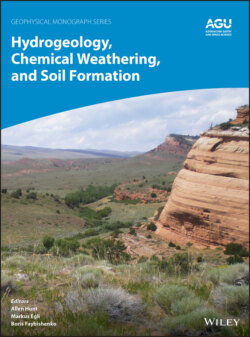Читать книгу Hydrogeology, Chemical Weathering, and Soil Formation - Allen Hunt - Страница 28
1.4.4. Soil‐Landscape Modeling
ОглавлениеSoil‐landscape models seek to integrate soils, parent material, topography, land use and land cover, and human activities with the aim of understanding the spatial distribution of soil attributes, characteristics of soils, and their behavior through time (Grunwald, 2006, 6). They build on earlier soil models, starting with the factorial models instigated by Dokuchaev, Zacharov, and Jenny, and the later soil system models (Table 1.1).
Soil landscapes are complex, involving geomorphological, biological, and hydrological processes acting over hundreds, thousands, or even millions of years. For this reason, understanding how soil landscapes function and evolve demands an interdisciplinary holistic approach and has benefitted hugely from the appearance of new and powerful technologies over the last few decades: satellite remote sensing, geographic information systems (GISs), global positioning systems (GPSs), digital elevation models (DEMs), and landscape evolution models (LEMs; cf. Brown, 2006). Pedologists have combined these technologies to tackle questions about soil landscapes. The value of digital terrain modeling to hydrology, geomorphology, and ecology was recognized by the early 1990s (e.g. Moore et al., 1991). More recently, pedometrics has attempted to integrate knowledge from numerous disciplines, including soil science, statistics, and GIS.
Early numerical models of landscapes in geomorphology included soil depth as a state variable (e.g. Ahnert, 1967; Armstrong, 1980). Huggett (1975) simulated the movement of solutes on slopes within a drainage basin. The model of the soil–landscape continuum built by Kevin McSweeney and his colleagues (1994) benefitted from technical advances made through linking hydrology and land‐surface form for terrain‐based modeling of hydrological processes. In their model of soil‐landscape systems, various sources of spatial data (e.g. vegetation and geological substrate) and attribute data (e.g. soil organic‐matter content and particle‐size distribution) are integrated through GIS technology. Four interrelated and iterative stages are applied in the model: physiographic domain characterization; geomorphometric characterization; soil horizon characterization; and soil property characterization. Many subsequent models have appeared, each adding refinements (e.g. Heimsath et al., 1997; Sommer, 2006; Vanwalleghem et al., 2013; Willgoose, 2018).
